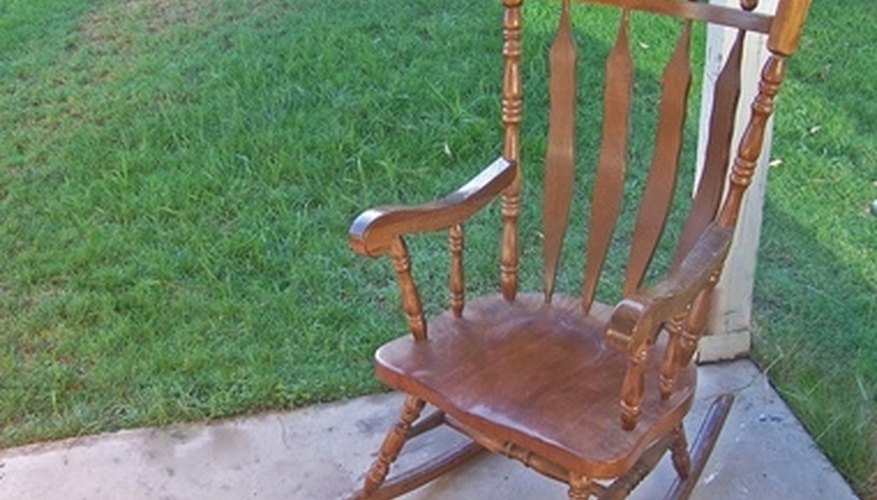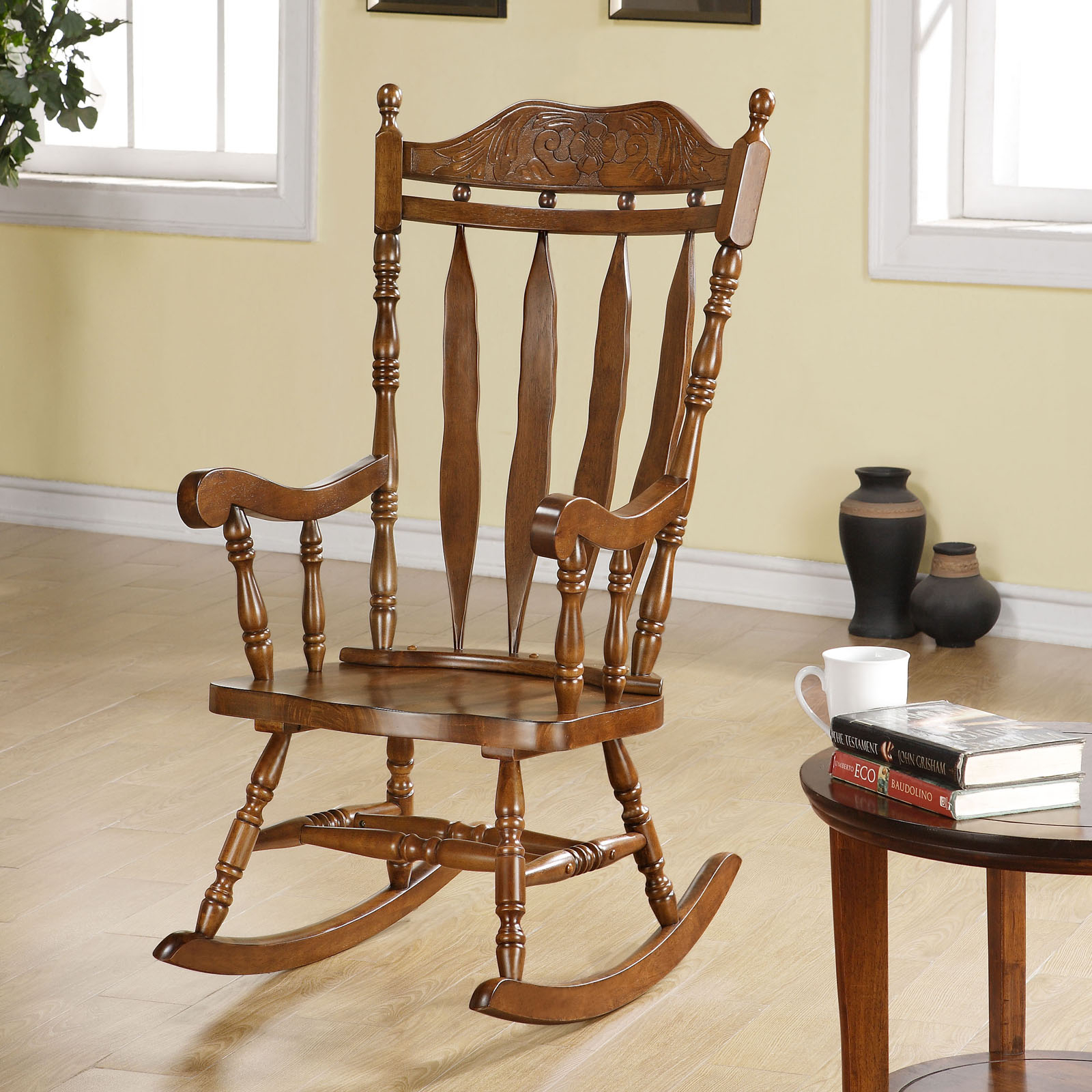Understanding Rocking Chair Distress

Rocking chairs, with their gentle swaying motion, are beloved for their comfort and charm. However, like any piece of furniture, they are susceptible to wear and tear over time. Understanding the signs of distress in a rocking chair is crucial for maintaining its structural integrity and extending its lifespan.
Causes of Rocking Chair Distress
Several factors contribute to the deterioration of rocking chairs, resulting in various forms of distress.
- Material Degradation: Wood, the primary material used in rocking chairs, is susceptible to natural degradation over time. Exposure to moisture, temperature fluctuations, and ultraviolet (UV) radiation can cause wood to warp, crack, and become brittle.
- Wear and Tear: The constant rocking motion puts stress on the chair’s structural components, particularly the rockers, spindles, and joints. Over time, these components can weaken, leading to loosening, cracking, and even breakage.
- Improper Use: Rocking chairs are designed for gentle, rhythmic movements. Excessive weight, abrupt rocking, or using the chair for purposes other than rocking can contribute to premature wear and tear.
Types of Rocking Chair Distress
Rocking chair distress manifests in various ways, each indicating a specific problem and requiring a different approach to repair.
- Loose Joints: This is a common issue, especially in older chairs. Over time, the glue holding the joints together can weaken, leading to instability and rattling.
- Cracked or Split Wood: This is a more serious problem, indicating structural weakness. Cracks can develop in the rockers, spindles, or seat frame due to excessive weight, improper use, or material degradation.
- Worn or Damaged Rockers: The rockers are the most vulnerable part of the chair, constantly bearing the weight of the sitter and the force of the rocking motion. Wear and tear can lead to rounded edges, uneven rocking, or even breakage.
- Loose or Missing Hardware: Screws, bolts, and other hardware can loosen or become damaged over time, compromising the chair’s stability.
Methods for Distressing a Rocking Chair: How To Distress A Rocking Chair

Distressing a rocking chair is a great way to give it a vintage look and feel. It involves creating the appearance of age and wear, making it look like it’s been loved and used for years. There are several methods you can use to distress a rocking chair, each with its own pros and cons.
Sanding
Sanding is a popular method for distressing furniture because it’s relatively simple and can be done with minimal tools. It involves using sandpaper to remove layers of paint or stain, revealing the wood underneath. This creates a weathered look, and you can control the level of distress by choosing different grit sandpaper.
Here are the pros and cons of sanding:
- Pros:
- Easy to learn and do.
- Requires minimal tools.
- Allows for control over the level of distress.
- Cons:
- Can be time-consuming, especially for large areas.
- Can damage the wood if not done carefully.
- May not be suitable for all types of wood.
Step-by-Step Guide to Sanding
1. Prepare the chair: Remove any hardware, such as screws, hinges, or knobs. Cover any areas you don’t want to distress with painter’s tape.
2. Choose sandpaper: Start with coarse-grit sandpaper (80-120 grit) for removing large amounts of paint or stain. You can then switch to finer-grit sandpaper (150-220 grit) for a smoother finish.
3. Sand the chair: Start sanding in the direction of the wood grain. Focus on areas that would naturally wear down, like the arms, seat, and legs.
4. Distress the edges: Use a sanding block or sandpaper to create rounded edges and chipped corners.
5. Clean the chair: Once you’re satisfied with the distress, clean the chair with a damp cloth to remove dust and debris.
6. Apply a finish: You can apply a clear sealant or wax to protect the distressed finish.
Paint Stripping, How to distress a rocking chair
Paint stripping is another effective method for distressing a rocking chair. It involves using a chemical stripper to remove layers of paint, revealing the wood underneath. This can create a more dramatic distressed look than sanding, but it requires more caution and care.
- Pros:
- Creates a more dramatic distressed look than sanding.
- Can be used on multiple layers of paint.
- Cons:
- Can be dangerous if not used properly.
- Requires careful cleanup and disposal.
- Can damage the wood if not used carefully.
Step-by-Step Guide to Paint Stripping
1. Prepare the chair: Remove any hardware, such as screws, hinges, or knobs. Cover any areas you don’t want to strip with painter’s tape.
2. Choose a stripper: There are different types of paint strippers available, so choose one that’s suitable for the type of paint on your chair.
3. Apply the stripper: Apply the stripper to the chair according to the manufacturer’s instructions. Be sure to wear gloves and a mask to protect yourself from fumes.
4. Remove the paint: Once the stripper has softened the paint, use a scraper to remove it. Be careful not to damage the wood.
5. Clean the chair: Once all the paint is removed, clean the chair with a damp cloth to remove any stripper residue.
6. Neutralize the stripper: Some strippers require a neutralizing solution to be applied after cleaning.
7. Apply a finish: You can apply a clear sealant or wax to protect the distressed finish.
Chemical Treatments
Chemical treatments can also be used to distress a rocking chair. These treatments create a weathered look by changing the color or texture of the wood. They are available in various forms, such as stains, washes, and glazes.
- Pros:
- Can create a variety of distressed looks.
- Relatively easy to apply.
- Cons:
- Can be difficult to control the level of distress.
- May not be suitable for all types of wood.
Step-by-Step Guide to Chemical Treatments
1. Prepare the chair: Remove any hardware, such as screws, hinges, or knobs. Cover any areas you don’t want to treat with painter’s tape.
2. Choose a treatment: Select a chemical treatment that’s appropriate for the type of wood and the desired distressed look.
3. Apply the treatment: Apply the treatment according to the manufacturer’s instructions. Be sure to wear gloves and a mask to protect yourself from fumes.
4. Distress the edges: Use a sanding block or sandpaper to create rounded edges and chipped corners.
5. Clean the chair: Once the treatment has dried, clean the chair with a damp cloth to remove any residue.
6. Apply a finish: You can apply a clear sealant or wax to protect the distressed finish.
Distressing Techniques and Finishes

Distressing a rocking chair goes beyond simply making it look old. It’s about creating a unique character, a story etched in the wood, a testament to time and use. This section delves into various techniques to achieve different distressing effects and explores the finishes that can be applied afterward to enhance the overall look.
Distressing Techniques
Distressing techniques are the heart of the process, creating the visual cues of age and wear. Each technique produces a distinct look, adding depth and character to your rocking chair.
- Chipping: This technique simulates the gradual wearing away of paint or stain over time. You can achieve chipping by using a hammer, sandpaper, or a paint scraper. The key is to create irregular chips and flakes, mimicking natural wear and tear.
- Cracking: This technique involves creating fine cracks in the surface, mimicking the aging of wood. You can achieve cracking by using a crackle medium or by applying layers of paint that contract at different rates.
- Antiquing: This technique involves creating a patina, a layer of discoloration that gives the wood an aged appearance. You can achieve antiquing by using a variety of methods, such as applying a wash of paint, stain, or glaze, or by rubbing a dark wax into the wood.
Finishes
Once you’ve distressed your rocking chair, you can apply a finish to protect the wood and enhance the overall look. Different finishes offer varying degrees of protection and aesthetic appeal.
| Finish | Description | Pros | Cons |
|---|---|---|---|
| Paint | Provides a durable and opaque finish, allowing you to completely change the color of the chair. | Wide range of colors, durable, hides imperfections | Can hide the wood grain, requires multiple coats |
| Stain | Penetrates the wood, enhancing its natural color and grain. | Preserves the wood’s natural beauty, enhances grain | Less durable than paint, can be difficult to apply evenly |
| Wax | Provides a protective layer that enhances the natural sheen of the wood. | Enhances natural sheen, easy to apply, non-toxic | Less durable than paint or stain, requires regular reapplication |
Achieving a Natural Distressed Look
The key to achieving a natural distressed look is to mimic the way wood ages naturally. This involves creating uneven wear patterns and using techniques that produce a subtle, aged effect.
- Use a variety of techniques: Don’t rely on just one technique. Combine chipping, cracking, and antiquing to create a more realistic and layered effect.
- Work in sections: Don’t try to distress the entire chair at once. Work in small sections, focusing on areas that would naturally see the most wear, such as the armrests, seat, and legs.
- Use natural materials: Use sandpaper, wire brushes, and other natural materials to create a more authentic look.
- Distress the finish: Don’t just distress the wood. Distress the finish as well, creating chipped paint, faded stains, and worn-out wax.
- Embrace imperfections: Don’t try to be perfect. Embrace the imperfections and inconsistencies, as they add to the charm of the distressed look.
How to distress a rocking chair – Dek, kalau nak buat kerusi goyang tu nampak antik sikit, bolehlah digosok sikit pakai kertas pasir halus. Tapi kalau nak yang elegan macam royal prince rocking chair tu, kena cari tukang kayu yang mahir. Lepas tu, baru lah bolehlah letak di ruang tamu, nampak mewah dan menenangkan hati.
Dek, kalau ado kursi goyang nan kayu, bisa kok di-distress, di-amplas pelan-pelan sampai kelihatan tekstur kayunya. Kalo ado nan mau cari kursi goyang nan ado duonyo, coba lah liat double rocking chair white nan elok tu. Nanti, pas di-distress, kursi goyangnyo bakalan makin elegan dan klasik, layaknya kursi goyang nan ado di rumah urang tuo dulu.